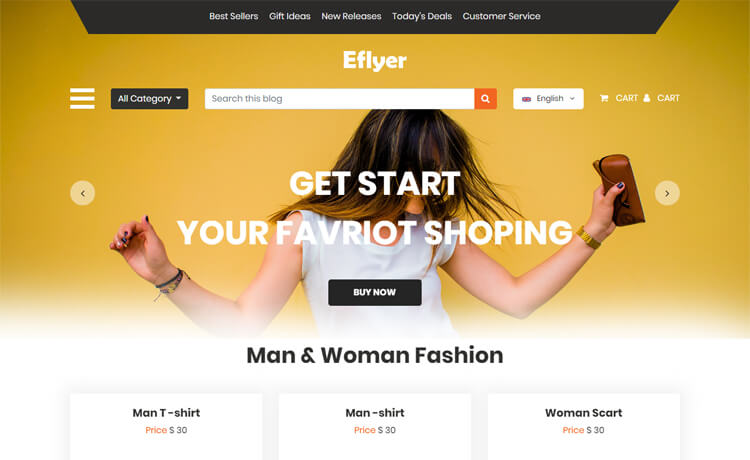If you’re looking to create a stunning website without the hassle of coding, then Free Webflow Templates are exactly what you need. With a wide range of beautifully designed templates, you can quickly and easily customize your website to fit your unique style and brand. Whether you’re a small business owner, a blogger, or an aspiring entrepreneur, these templates offer the perfect starting point for your online presence. And with Systeme.io, you’ll have access to an all-in-one platform that allows you to manage your entire online business with ease. From email marketing and sales funnels to webinars and online course management, Systeme.io has got you covered. Plus, with its free plan and affordable pricing options, you’ll get the best value for your money. So why wait? Start building your dream website today with Free Webflow Templates.
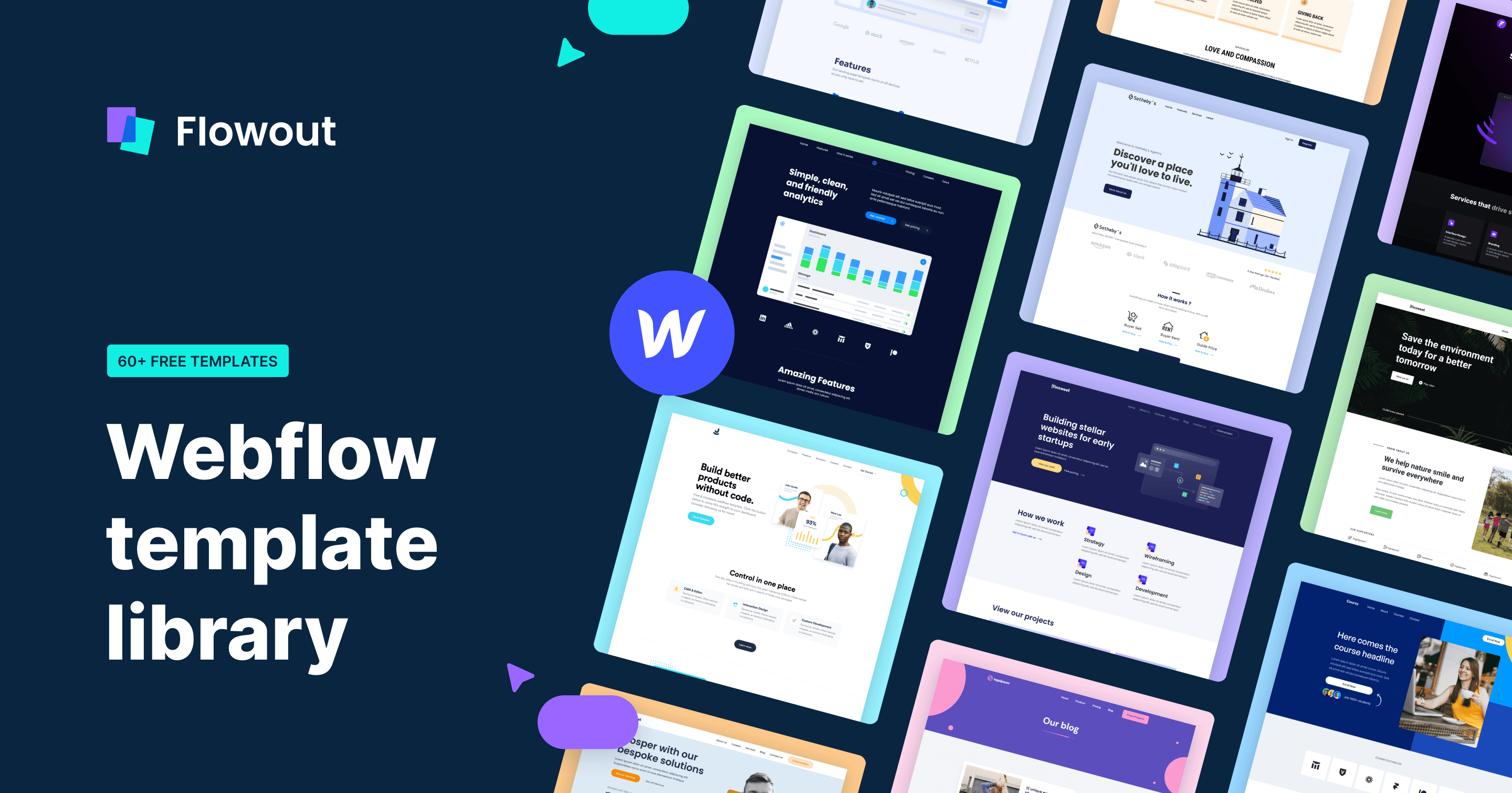
This image is property of assets.website-files.com.
Understanding Webflow Templates
Webflow templates are pre-designed website templates that can be easily customized and used to build professional websites. These templates are created using Webflow, a visual web design tool that allows users to create websites without the need for coding.
What are Webflow templates?
Webflow templates are ready-made website designs that can be customized and used as a starting point for building websites. They come with pre-designed layouts, styles, and elements that can be easily edited and customized to fit the needs and branding of any website.
Importance of Webflow templates
Webflow templates are important because they offer a time-saving solution for website design and development. Instead of starting from scratch, users can choose a template that matches their requirements and make necessary modifications to create a unique website. This not only saves time but also ensures a professional and visually appealing design.
How to use Webflow templates
Using Webflow templates is straightforward. After selecting a template, users can import it into their Webflow account. From there, they can customize the template by editing text, images, colors, and other elements using Webflow’s visual editor. Users can also add additional pages, sections, or functionality to the template to suit their needs. Once the customization is complete, the website can be published and hosted using Webflow or exported for use on another hosting platform.
Recommended Free Webflow Templates
There are various free Webflow templates available that cater to different industries and purposes. Let’s review some of the popular free Webflow templates and discuss their features and benefits.
Review of popular free Webflow templates
-
Template 1: A clean and minimalistic template suitable for portfolio websites. It includes a responsive design, smooth animations, and customizable sections for projects and client testimonials.
-
Template 2: This e-commerce template is perfect for online stores. It features a user-friendly product listing, shopping cart functionality, and integration with payment gateways.
-
Template 3: A modern blog template with a focus on typography and readability. It offers multiple blog post layouts, an archive page, and social media integration.
Features and benefits of these templates
The free Webflow templates come with a range of features that provide numerous benefits to users. The templates are responsive, ensuring that the websites look and function well on different devices. They also offer customizable sections, allowing users to showcase their content in a visually appealing manner. Additionally, these templates are built with SEO best practices, helping websites rank higher in search engine results.
How to download and install free Webflow templates
To download and install free Webflow templates, users need to create a Webflow account if they don’t already have one. Once logged in, they can browse the templates available in the Webflow template marketplace. After selecting a template, users can click on the “Clone” button to make a copy of the template in their account. The template will then be available for customization and deployment within the Webflow editor.
Webflow Templates for Businesses
Webflow templates are especially beneficial for businesses as they offer professionally designed layouts and functionality that cater to specific business needs.
Benefits of using Webflow templates for businesses
Using Webflow templates for businesses offers several advantages. Firstly, these templates provide a quick and cost-effective solution for website creation, enabling businesses to establish an online presence without the need for extensive design and development resources. Secondly, Webflow templates are responsive and optimized for performance, ensuring that businesses can provide an optimal user experience across different devices. Lastly, these templates can be easily customized to align with the branding and messaging of the business, creating a cohesive and professional online presence.
Best free Webflow templates for businesses
-
Template 1: A professional template designed specifically for corporate websites. It includes sections for company information, team profiles, services, and portfolios.
-
Template 2: This template is tailored for startups and small businesses. It offers a modern and vibrant design, with sections for showcasing products or services, client testimonials, and a contact form.
-
Template 3: An e-commerce template perfect for online retail businesses. It features a clean design, easy navigation, and integration with popular e-commerce platforms.
Customizing Webflow templates for business needs
Webflow templates can be easily customized to meet the specific needs of businesses. Companies can add their logo, change colors to match their branding, and update the content and images to reflect their products or services. Webflow’s visual editor allows users to make these modifications without the need for coding, making it accessible to businesses without technical expertise.
Webflow Templates for Creatives
Webflow templates provide an excellent platform for creative professionals to showcase their portfolio, artwork, or design projects.
Free Webflow templates for creative professionals
-
Template 1: A minimalist portfolio template with a focus on visual storytelling. It offers responsive galleries, project details, and a blog section for sharing creative insights.
-
Template 2: This template is designed specifically for photographers. It features grid and masonry galleries, image sliders, and a fullscreen layout option for exceptional visual impact.
-
Template 3: A versatile template for designers, illustrators, and artists. It offers a flexible layout, multiple portfolio styles, and a blog section for sharing design processes and inspirations.
Branding and design options in Webflow templates
Webflow templates provide a range of branding and design options that allow creative professionals to showcase their unique style. Users can customize typography, colors, and layout to create a visually appealing and cohesive website. Additionally, Webflow templates offer design elements and sections that are specially crafted for creative professionals, such as gallery layouts, sliders, and animations.
Success stories of creatives using Webflow templates
Many creatives have found success using Webflow templates to build their online portfolios or showcase their creative work. Webflow provides case studies and testimonials on their website, highlighting how creatives have utilized their templates to gain visibility, attract clients, and ultimately grow their careers. These success stories showcase the effectiveness of Webflow templates in helping creatives stand out in the competitive creative industry.
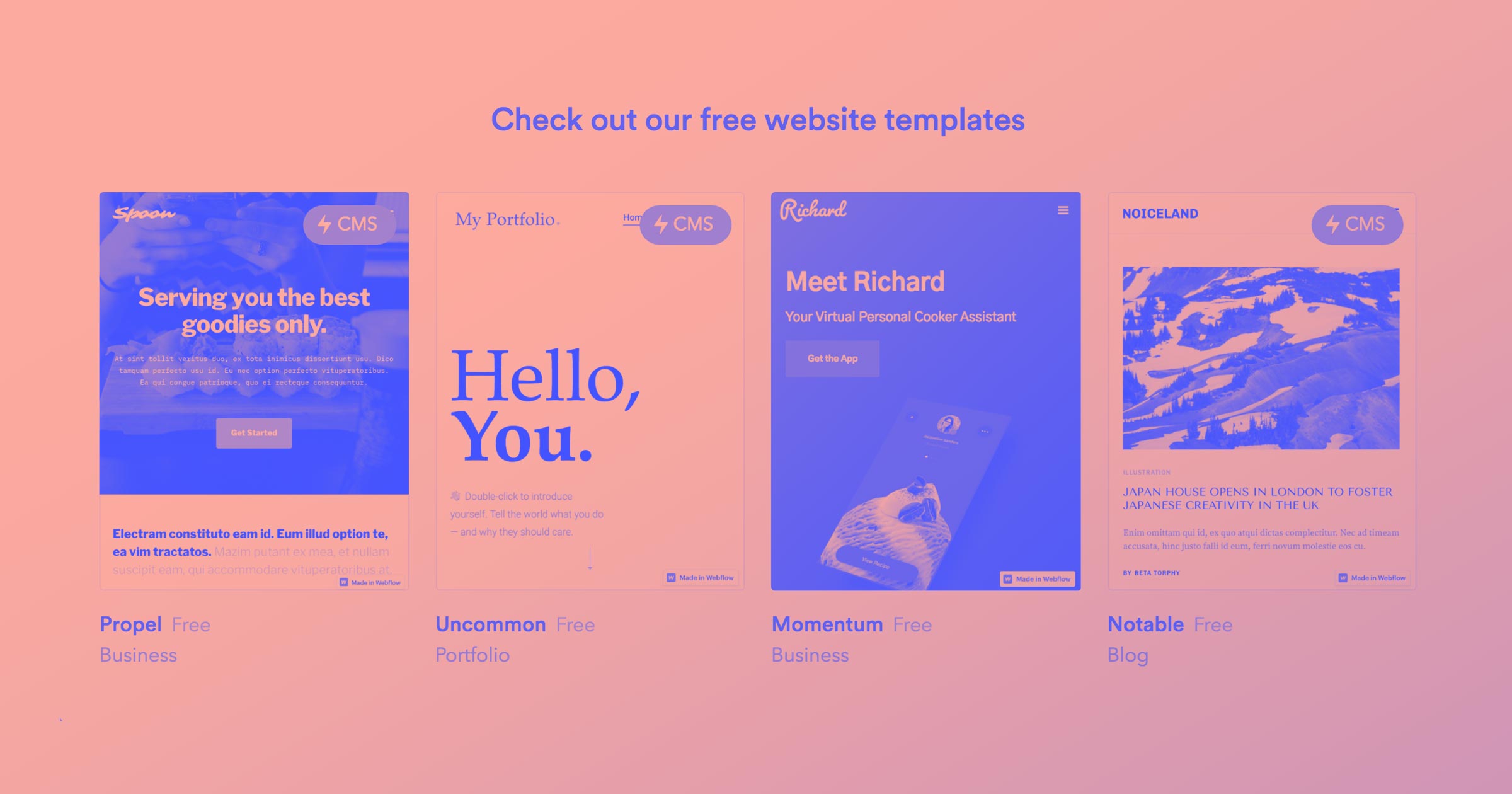
This image is property of assets-global.website-files.com.
Webflow Templates for Ecommerce
Webflow templates offer robust features and functionality that can facilitate the creation and management of online stores.
How Webflow templates can facilitate e-commerce
Webflow templates designed for e-commerce provide essential features such as product listings, shopping carts, and secure payment gateways. These templates also offer integration with popular e-commerce platforms, inventory management systems, and shipping solutions, making it easier for businesses to set up and manage their online stores. Additionally, Webflow’s visual editor allows for easy customization, enabling businesses to create unique and visually appealing online shopping experiences.
Top free Webflow templates for online stores
-
Template 1: A modern and clean e-commerce template suitable for various product categories. It offers multiple product listing styles, a checkout process, and integration with popular payment gateways.
-
Template 2: This template is specifically designed for fashion and apparel stores. It features a visually appealing design, product filtering options, and a quick view feature for seamless browsing.
-
Template 3: An e-commerce template tailored for digital products or online courses. It includes sections for product descriptions, pricing options, and a secure download or course enrollment process.
Creating product listings using Webflow templates
Webflow templates provide pre-designed layouts for product listings, making it easier for businesses to showcase their products in a visually appealing manner. Users can customize these product listing pages by adding product images, descriptions, pricing information, and other relevant details. Webflow’s editor allows for easy management of product inventory, pricing updates, and product categorization, providing businesses with the tools they need to effectively sell their products online.
Webflow Templates for Blogging
Webflow templates offer a range of options for bloggers who want to create visually appealing and functional blog websites.
Blog design options with Webflow templates
Webflow templates designed for blogging provide various layout options for creating compelling and user-friendly blog websites. These templates offer features such as multiple blog post layouts, social media integration, and commenting systems. Users can easily customize these templates to match their branding and modify the overall design to suit their content and writing style.
Best free Webflow templates for bloggers
-
Template 1: A clean and minimalistic blog template with a focus on readability. It offers different post layouts, an archive page, and integration with popular social media platforms for easy sharing.
-
Template 2: This template is designed for magazine-style blogs with multiple topics and categories. It features a grid layout, eye-catching images, and options for displaying featured posts.
-
Template 3: A template specifically designed for personal bloggers looking for a unique and creative layout. It offers customizable sections for personal stories, travel journals, and photography.
Webflow templates vs traditional blogging platforms
Webflow templates provide bloggers with more design flexibility and customization options compared to traditional blogging platforms. While traditional platforms offer limited design templates and customization features, Webflow templates allow bloggers to have complete control over the appearance and functionality of their blogs. Additionally, Webflow’s visual editor makes it easier for bloggers to make changes to their websites without the need for coding knowledge.
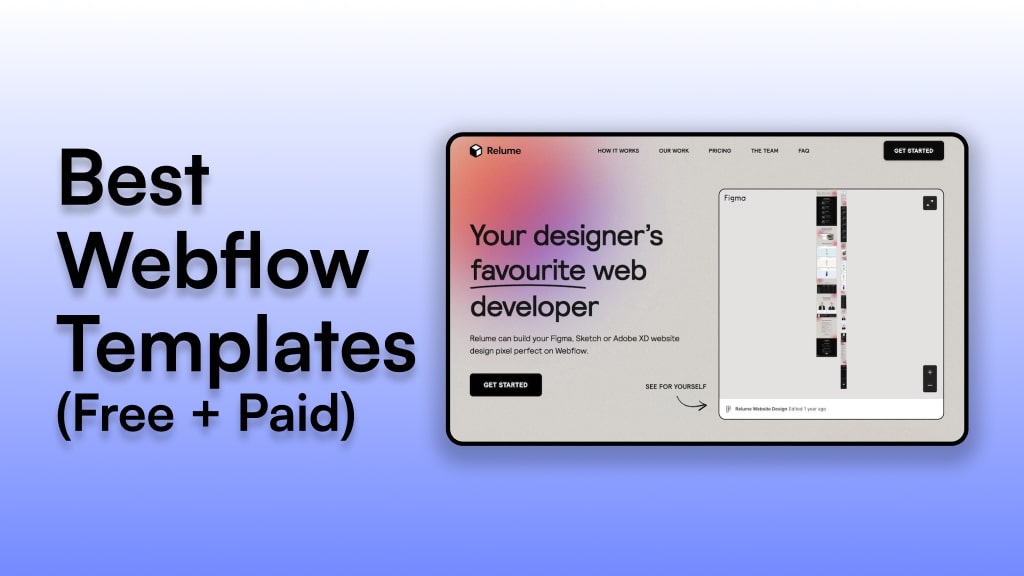
This image is property of assets-global.website-files.com.
Customizing Webflow Templates
Webflow templates can be easily customized to meet specific design requirements. Here’s a guide on how to customize Webflow templates effectively.
Guide to customizing Webflow templates
-
Familiarize yourself with the template structure: Take a thorough look at the template’s pages, sections, and elements to understand how they are organized.
-
Customize typography and colors: Use Webflow’s editor to modify font styles, sizes, and colors to align with your branding.
-
Edit content: Update the template’s text, images, and other media files to reflect your own content.
-
Add or remove sections: Customize the template layout by adding or removing sections based on your website’s needs.
-
Customize interactions and animations: Webflow offers a range of interactions and animations that can enhance the user experience. Use these features to create engaging and interactive elements within your template.
Do’s and don’ts of template customization
When customizing Webflow templates, it’s important to keep a few do’s and don’ts in mind:
Do’s:
- Backup your original template: Create a duplicate of the original template before making any significant modifications to ensure you have a fallback option.
- Test on multiple devices: Make sure your customized template looks and functions well on different screen sizes and devices.
- Optimize for SEO: Ensure that your customized template follows SEO best practices, such as using descriptive alt text for images and implementing proper meta tags.
Don’ts:
- Overdo animations: While animations can enhance your website’s visual appeal, excessive use can lead to a cluttered and distracting user experience.
- Ignore mobile responsiveness: Ensure that your customized template is fully responsive and optimized for mobile devices.
- Modify core functionality: Only make changes within the parameters of the template and avoid altering the core functionality as it may lead to compatibility issues or unsupported features.
Resources for learning about template customization
Webflow provides comprehensive resources for learning about template customization. Their website offers documentation, video tutorials, and a community forum where users can find answers to their questions. Additionally, Webflow hosts webinars and workshops that cover various aspects of template customization, allowing users to enhance their skills and stay up to date with the latest features and best practices.
Webflow Templates vs Other Platforms
Webflow templates stand out among other website-building platforms in terms of flexibility, customization options, and design capabilities.
Comparing Webflow templates with other platforms
-
Traditional website builders: Traditional website builders often have limited design options and customization features compared to Webflow templates. Webflow’s visual editor allows for greater control over design elements, typography, and layout customization.
-
Content management systems (CMS): While CMS platforms like WordPress offer a large number of themes and plugins, they can be complex and require technical expertise. Webflow templates provide a user-friendly alternative that does not require coding or extensive technical knowledge.
-
Drag-and-drop website builders: Drag-and-drop builders offer simplicity in creating websites, but their customization options can be limited. Webflow templates combine the ease of use of a drag-and-drop editor with the flexibility and granular control of a visual design tool.
Why choose Webflow templates
There are several reasons why Webflow templates are a popular choice for website creation:
-
Design control: Webflow templates provide granular control over the design and layout of websites, allowing users to create unique and visually appealing designs.
-
Customizability: Webflow templates can be easily customized to align with branding and specific website requirements without the need for coding.
-
Responsive and optimized: Webflow templates are built with responsiveness and performance in mind, ensuring a seamless user experience across different devices.
-
Time-efficiency: By starting with a pre-designed template, users can save time on design and development, allowing them to launch their websites faster.
-
Community and support: Webflow has a strong community of designers, developers, and users who share knowledge and provide support through forums, documentation, and workshops.
Case studies of transitions to Webflow from other platforms
Webflow provides case studies of businesses and individuals who have successfully transitioned their websites from other platforms to Webflow. These case studies highlight the improved design, performance, and ease of use experienced after moving to Webflow. Through these examples, users can gain valuable insights and inspiration for their own website migration projects.
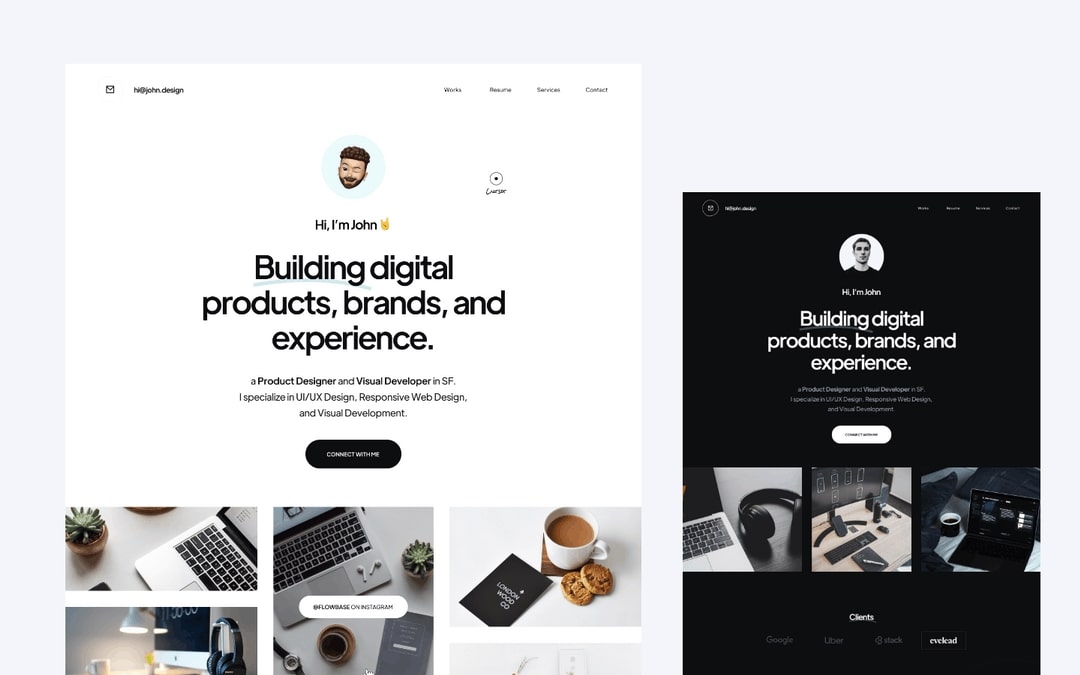
This image is property of assets-global.website-files.com.
Troubleshooting Common Issues with Webflow Templates
While Webflow templates are user-friendly, there may be common problems that users encounter during the customization process. Here are some common issues and their solutions.
Common problems encountered with Webflow templates
-
Misaligned elements: Elements such as text or images may not be positioned correctly on the template. This can be due to incorrect settings or conflicting styles.
-
Broken links or missing images: Links or images may not work properly on the customized template. This can happen if the paths or file names have changed or if the links were not properly updated.
-
Unwanted interactions or animations: Customized templates may have unwanted interactions or animations that affect the overall user experience.
Solutions to these common problems
-
Misaligned elements: Double-check the settings of the elements and ensure that there are no conflicting styles. Adjust the layout or positioning options to align the elements correctly.
-
Broken links or missing images: Review the links and file paths and ensure that they are correct. Update the links or file names if needed. If the images are missing, re-upload them and update the image references.
-
Unwanted interactions or animations: Use Webflow’s editor to disable or modify the interactions or animations that are causing issues. Make sure to test the customized template thoroughly to ensure that all desired animations and interactions function as intended.
Where to seek help when encountering template issues
When encountering template issues, there are various resources available for help:
-
Webflow documentation: Webflow provides comprehensive documentation that covers various aspects of template customization and troubleshooting. Users can refer to the documentation to find solutions to common issues.
-
Webflow forum: The Webflow community forum is a platform where users can seek assistance from other Webflow users and experts. It’s a great place to ask questions, share experiences, and get advice on resolving template-related problems.
-
Webflow support: For more complex or urgent issues, users can reach out to Webflow’s support team. They provide technical assistance and guidance to help users resolve template issues efficiently.
Future of Webflow Templates
Webflow templates are continuously evolving to meet the demands of the web design industry. Here’s a look at the predicted trends and upcoming features in Webflow templates.
Predicted trends in Webflow template usage
-
Increased adoption in various industries: As Webflow continues to gain popularity and refine its capabilities, more businesses and individuals across industries are expected to embrace Webflow templates for their website creation needs.
-
Mobile-first design: With the growing dominance of mobile devices, Webflow templates are likely to prioritize mobile-first design and ensure optimal performance and usability on smaller screens.
-
Enhanced e-commerce capabilities: Webflow is likely to expand its e-commerce offerings, providing more features and integrations to facilitate seamless online shopping experiences.
Upcoming features in Webflow templates
-
Integrations with popular third-party tools: Webflow is likely to further enhance its integrations with popular tools and platforms, making it easier for users to connect their websites with CRM systems, marketing automation platforms, and other essential business tools.
-
Advanced customization options: Webflow is expected to offer more advanced customization options, allowing users to create even more unique and complex designs without the need for custom coding.
-
Improved performance and speed: Webflow will likely continue to prioritize performance and speed optimization to ensure fast-loading websites and excellent user experiences.
How to stay updated on new Webflow templates and features
To stay updated on new Webflow templates and features, users can visit the Webflow website regularly. Webflow often announces new templates, features, and updates through their blog, newsletter, and social media channels. Engaging with the Webflow community, attending webinars or workshops, and following industry blogs and forums are also effective ways to stay informed about the latest developments in Webflow templates.

